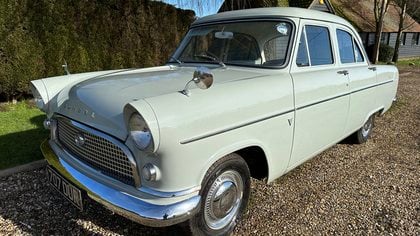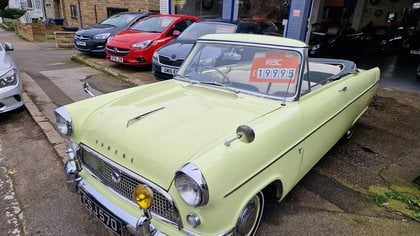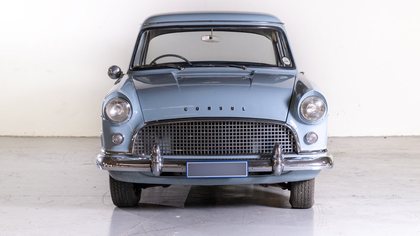Description
1953 Ford Consul
Hi and welcome to the listing for my charming 1950's classic Ford Consul.
Runs, drives and stops. Starts easily and the 3 speed column shift gearbox operates as it should.
Showing 77, 870 miles which although cannot be confirmed, could well be correct.
Presents well considering its 70+ years of age, with the bodywork and paint showing age-related marks but very usable - please see all photos as this forms part of the description.
The red leather/ vinyl interior appears to be original and presents well with a lovely patina.
Would make a good rolling restoration project to tinker with and improve while you use, does seem to have an intermittent ignition? issue as the ignition lights sometimes go out but will come back on again if you give the key a wiggle, I would therefore recommend trailering it away.
I have included some information about the Ford Consul below.
I can assist with delivery at an additional cost once the car has been paid for.
Any questions, feel free to send me a message.
Thanks for looking.
"The 1500 cc four-cylinder Consul was first shown at the 1950 London Motor Show. It was the start of Ford of Britain's successful attack on the family saloon car market. With stablemate Zephyr, it was the first British Ford with modern unibody construction. The Consul was given the Ford code of EOTA. Most cars were four-door saloons with body design by George Walker of the parent United States Ford Motor Company.
It was also the first car they built with up-to-date technology. The new 1508 cc 47 bhp (35 kW) engine had overhead valves, and hydraulic clutch operation was used, which in 1950 was an unusual feature. However, a three-speed gearbox, with synchromesh only on second and top, was retained. The Consul was also the first British production car to use the now-common MacPherson strut independent front suspension.
The bench front seat was trimmed in PVC, and the handbrake was operated by an umbrella-style pull lever under the facia (dash). The windscreen wipers used the antiquated vacuum system, but it came from a vacuum pump linked to the camshaft-driven fuel pump instead of the induction manifold as on Ford's earlier applications of this arrangement. Clearly keen to keep things positive, a 1950 road test by the British Autocar magazine reported that the wipers were "free from the disadvantage of early suction-driven wipers that dried up at wide throttle opening ... and spare[d] the battery". The initial dashboard was a flat, symmetrical panel with interchangeable instrument cluster and glovebox, but from September 1952, a redesigned asymmetrical dashboard was fitted, and the instruments, consisting of speedometer, ammeter, and fuel gauge, were positioned in a housing above the steering column, with a full-width parcel shelf on which an optional radio could be placed.
A car tested by The Motor in 1953 had a top speed of 72 mph (116 km/ h) and could accelerate from 0-60 mph (97 km/ h) in 28 seconds."

















